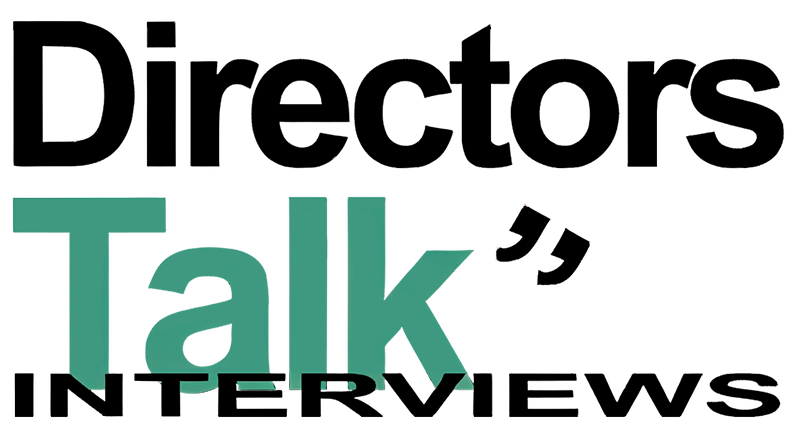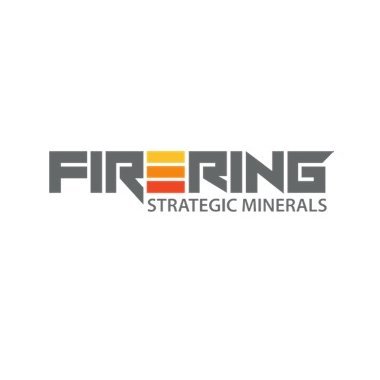Firering Strategic Minerals plc (LON:FRG), an exploration company focusing on critical minerals, is pleased to announce assay results from its Reverse Circulation campaign at its Atex Lithium-Tantalum Project in Côte d’Ivoire.
HIGHLIGHTS
· Expanded known lithium mineralisation by 122%, stretching the strike length to 800m.
o 80m NNE (TVRC0009) and 712m SSW (TVRC0005) from diamond core hole TVDD004.
· Positive assay results within the Atex license area, with notable intercepts including 15m at 0.74% Li2O from 118m and 6m at 1.59% Li2O from 118m (TVRC0009).
· Assay results confirmed promising lithium potential within the license area, aligning with the broader lithium exploration success in the region.
· Next stage to focus on expanding drilling exploration efforts in an easterly and northerly direction and delineating a maiden resource at Atex.
Yuval Cohen, Chief Executive of Firering Strategic Minerals, said: “Our recent RC drilling efforts at Atex have yielded significant extensions to the known lithium mineralisation, expanding it by 80m in a north-north-easterly direction (TVRC0009) and 712m in a south-south-westerly direction (TVRC0005). This brings the total strike length of identified intermittent lithium mineralisation to 800m, which is a substantial 122% increase from the previous known strike length of 360m ascertained during our DD campaign in 2022. Noteworthy assay results include a positive intercept of 15m at 0.74% Li2O from 118m in hole TVRC0009, which encompasses a 6m section yielding an even higher grade of 1.59% Li2O.
“Our focus is now on expanding exploration efforts in an easterly and northerly direction within our Atex license area. This will involve increased drilling activities, with the ultimate goal of delineating a maiden resource in the near future.”
DETAILS
Lithium-cesium-tantalum (“LCT”) pegmatites within the Atex licence area
The lithium bearing LCT pegmatites within the Atex Project area are hosted rocks of the Birimian Supergroup within the Syama-Boundiali Greenstone Belt of northern Cote d’Ivoire. These pegmatites form part of the larger Birimian-age (~2 Ga) pegmatite province within the Baoulé-Mossi domain of the West African Craton, which is host to a number of lithium bearing LCT pegmatite fields including those in southwestern Mali, Ghana, south-western Niger, and Burkina Faso (Melcher et al., 2017). Ivory Coast and the broader region is considered to have significant hard rock lithium potential and is demonstrated by the success of a number of explorers in the region that have advanced lithium projects for which Mineral Resource estimates and studies have been reported, including:
· Ewoyaa Lithium Project in Ghana for which Atlantic Lithium (AIM:ALL, ASX:A11) announced its Definitive Feasibility Study (“DFS”) for the project in June 2023 – (EWOYAA, GHANA – Atlantic Lithium Ltd);
· Bougouni Lithium Project in southern Mali of Kodal Minerals (AIM: KOD.L) – Bougouni Lithium Project – Kodal Minerals; and
· Goulamina Lithium Project in southern Mali for which Leo Lithium’s (ASX:LLL) updated its DFS in December 2021 – Goulamina Project – Leo Lithium Limited.
Firering, currently the only lithium focused exploration company within Cote d’Ivoire exploring the lithium bearing pegmatites, has focused on the central and southern parts of the Atex licence. The northern parts of the licence area and broader region are also considered prospective for pegmatite hosted lithium mineralisation and will be the focus of Firering’s next exploration activities.
On 9 April 2024, gold explorer Desert Metals (ASX:DM1) reported the discovery of a lepidolite bearing pegmatite from air core drilling in the west of its Tengrela South licence, which Firering believes is encouraging given this is approximately 2km north of the northern edge of its Atex licence and 12km NNE of its key target, Spodumene Hill. The western extremity of the Tengrela South licence (PR-683) shares its southern boundary with the northern edge of Firering’s Atex licence (PR-777), and the two licences are geologically contiguous in this area comprising the north-northeast striking metavolcanics and metasedimentary rocks of the Birimian.
RC Assay Results
The Company completed a 23-hole RC drilling campaign for a total of 3,753m ranging from 80m to 200m depth, averaging 163m (Figure 1) in March 2024. Although 23 holes were drilled, TVRC0001 and TVRC0002 were abandoned due to poor recoveries and redrilled as TVRC0009 and TVRC0008 respectively. Accordingly, the results for the samples of the 21 holes submitted for assay have all been received and positive intercepts are shown in Table 1.
Sections showing significant intercepts in holes TVRC0009, TVRC0020 and TVRC0005 are shown in Figure 3 and Figure 4 respectively. A plan view of the location of the sections is shown in Figure 2.
 |
Figure 1: Map showing RC collars (2024 campaign) and DD collars (2022 campaign).
 |
Table 1: Positive intercepts (in bold) reported for completed RC holes.
Note: Significant intercepts for pegmatite ≥1m and with sample interval(s) ≥0.5% Li2O. Intercepts represent apparent widths and not true widths. Apparent width will be greater than true width and the relationship between apparent and true width has not yet been established. * Intercepts include 1m of mixed mafic schist and pegmatite along top and/or bottom contacts.
 |
Figure 2: Plan view of the two sections A-B and C-D shown in Figure 3 and Figure 4 respectively.
 |
Figure 3: Section looking southwest showing significant intercepts in holes TVRC0009 and TVRC0020. Note: Section A – B in Figure 3 shows significant intercepts in hole TVRC0009 and TVRC0020 in relation to the current geological interpretation. Intercepts show apparent thickness, not true thickness.
 |
Figure 4: Section looking southwest showing significant intercept in holes TVRC0005. Note: Section C – D in Figure 4 shows significant intercept in hole TVRC0005 in relation to the current geological interpretation. Intercept shows apparent thickness, not true thickness.
Drilling, Logging, Sampling and QA/QC
The drill holes are sited using a hand-held GPS (Global Positioning System device) within the tenement areas. On completion of the drilling, the final coordinates, and elevations of drillhole collars are also collected using a handheld GPS.
The RC drilling producing rock chips core has been utilised to sample the pegmatite below ground surface. Drilling was done using an Atlas Copco T3W RC drill rig with a 5.5 inch (140 mm) steel percussion hammer to drill from surface to sample through to fresh rock to a maximum down hole depth of 200 m. Drill chips were collected at 1m intervals from the start to the end of each hole. A small split from each intervals was washed, and a library of drill chips collected down each hole at 1 m intervals, and were qualitatively logged (i.e. lithology, weathering, and mineralogy). A sample of the drill chips were also laid out on a pallet on site and photographed. All drill chips in the chip trays were photographed both in dry and wet states, with the photographs stored in the database.
All intervals containing pegmatite material are split using a riffle splitter at the rig. Splits were collected for analysis and a duplicate split was collected every 50th sample. A split of the rejects has been retained as a reference sample. All host rock (i.e. non-pegmatite) intervals were also split, and a reference sample retained. All bulk samples were weighed prior to splitting to monitor recoveries, and wet or damp samples were first air dried, weighed and then split at Firering’s core yard in Tounvre.
The samples were crushed to -2mm and pulverised at the Intertek Preparation Laboratory, Cote d’Ivoire to 85% passing -75 microns. Sample pulps are exported to Perth, via Ghana, where pulps are fused with sodium peroxide and analysed by ICP-OES and ICP-MS to report 19-elements. (Intertek code FP6/MS and FP6/OE). QA/QC comprising alternating Certified Refence Materials (CRM) are inserted every 25th sample and blanks (silica chips) inserted every 33rd sample into the samples stream as well as alternating field duplicates (comprising a split from the RC sample rejects) and pulp duplicates are inserted every 25th sample into the sample stream sent to the laboratory to monitor the sampling methodology and laboratory performance as part of QA/QC compliance.
These QA/QC results were assessed upon receipt of analyses, checked and, if acceptable, imported into the Company’s exploration database. Follow-up with the laboratory is instigated in cases were any QA/QC sample fails the QA/QC parameters. No areas of concern were identified in the results being reported.
Geology
The area is located in the western limit of the Bagoé Basin within a southwest to north-south orientated arcuate belt of metavolcanic and metasedimentary rocks of the Birimian Supergroup that are surrounded by Eburnean-aged granitoids, including undeformed K-feldspar porphyritic monzogranites, which are temporally associated with the pegmatites in the region. The pegmatites within Atex are hosted in mafic schists, although some minor mica schist is also present, and comprise a series of steeply dipping north-northeast striking bodies. Less common are smaller east-west orientated pegmatites.
Work to date by Firering Strategic Minerals has identified several pegmatite bodies around Spodumene Hill that were the focus of the initial diamond core drilling campaign completed in 2022. Several of these pegmatites have been identified to be potentially lithium bearing, with the lithium hosted in spodumene and lepidolite.
Subsequent soil sampling and auger drilling completed in 2023 identified a number of additional pegmatite targets, which can be found at fireringplc.com:
· 22 June 2023 – 64940aeb5e64e_Exploration_Update_Atex_Lithium-Tantalum_Project.pdf;
· 11 July 2023 – 64ad0989af4e2_Phase_II_of_Auger_Drilling_Campaign_commenced_successfully.pdf; and
· 25 October 2023 – 6538d2be755b3_Commencement_of_Part_2_of_Phase_II_5000m_auger_drilling_campaign_at_Atex.pdf.
This RC drilling programme focused on testing the strike extensions to the north and south of Spodumene Hill as well as a number of the pegmatites to the south of Spodumene Hill that were identified in the more recent soil sampling and Phase II auger drilling completed in 2023.












































